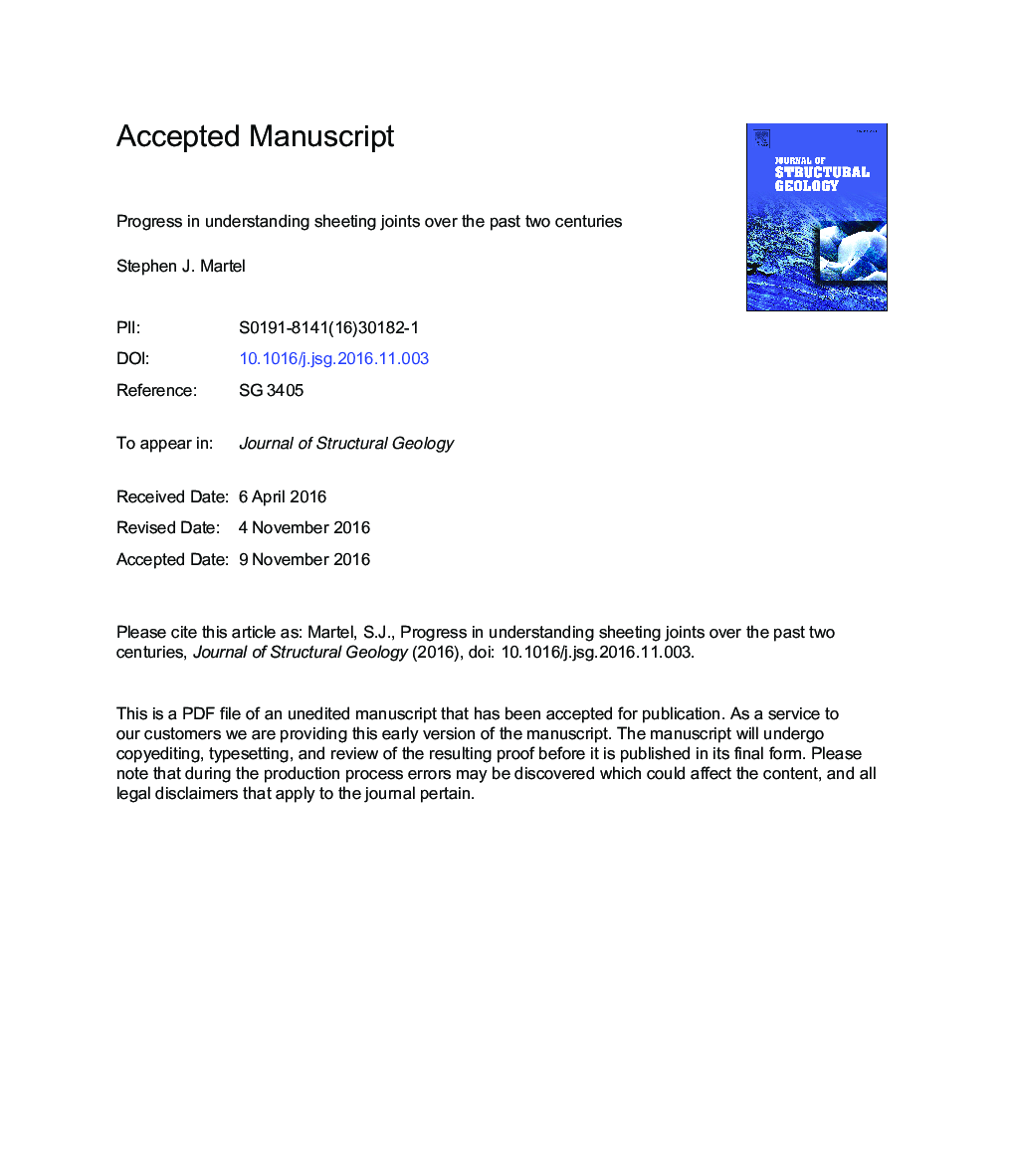| کد مقاله | کد نشریه | سال انتشار | مقاله انگلیسی | نسخه تمام متن |
|---|---|---|---|---|
| 5786377 | 1640486 | 2017 | 72 صفحه PDF | دانلود رایگان |
عنوان انگلیسی مقاله ISI
Progress in understanding sheeting joints over the past two centuries
ترجمه فارسی عنوان
پیشرفت در درک مفصل ورق در طول دو قرن گذشته
دانلود مقاله + سفارش ترجمه
دانلود مقاله ISI انگلیسی
رایگان برای ایرانیان
کلمات کلیدی
مفاصل ورق مکانیک شکستگی، توپوگرافی، استرس رانندگی، فشار آب،
موضوعات مرتبط
مهندسی و علوم پایه
علوم زمین و سیارات
زمین شناسی
چکیده انگلیسی
Sheeting joints share many geometric, textural, and kinematic features with other joints, but differ in that they are (a) discernibly curved, and (b) open near to and subparallel to the topographic surface. Where sheeting joints are geologically young, the surface-parallel compressive stresses are large, typically several MPa or greater. Sheeting joints typically are best developed beneath domes, ridges, and saddles. They also are reported beneath valleys or bowls. A mechanism that accounts for these associations has been sought for more than a century: the commonly subscribed explanation of erosion of overburden, by itself, is inadequate. Principles of fracture mechanics, together with the mechanical effects of a curved topographic surface experiencing a surface-parallel compression, provide a framework that accounts for the cardinal characteristics of sheeting joints. A compressive stress parallel to a convex topographic surface induces a tension perpendicular to the surface at shallow depths. In some cases, this combination alone can overcome the weight of overburden to open sheeting joints. Plausible distributions of water pressure in sheeting joints would help open and drive sheeting joints beneath valleys, saddles, and bowls. Thermal stresses help sheeting joints develop very near the ground surface. Sheeting joints thus appear to reflect an intricate fracture process primarily involving the shape, slope, and scale of the topography; the regional horizontal stresses; the effect of gravity; and groundwater pressure. Understanding how sheeting joints evolve in three dimensions through time remains an outstanding challenge and would illuminate their effect on landscapes, slope stability, and fluid flow.
ناشر
Database: Elsevier - ScienceDirect (ساینس دایرکت)
Journal: Journal of Structural Geology - Volume 94, January 2017, Pages 68-86
Journal: Journal of Structural Geology - Volume 94, January 2017, Pages 68-86
نویسندگان
Stephen J. Martel,
